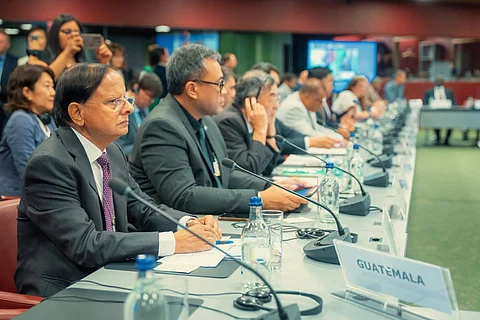

At the 8th Global Platform for Disaster Risk Reduction (GPDRR) 2025 held in Geneva, India presented its pioneering, nationally anchored Disaster Risk Reduction (DRR) financing system—the largest of its kind globally. During the event, Dr. P. K. Mishra, Principal Secretary to the Prime Minister of India, called for the establishment of a dedicated global facility to support DRR financing, emphasizing that such investment is essential to safeguarding development progress in an era of escalating climate and disaster risks.
Dr. Mishra highlighted India's remarkable progress, tracing the country’s DRR financing journey from an initial allocation of around USD 1 million to a projected USD 42 billion under the 16th Finance Commission. This leap has been enabled by a structured, rule-based financing framework grounded in the Disaster Management Act of 2005. He emphasized that India’s model, characterized by pre-defined and uninterrupted fund flows from the national to the state and district levels—has successfully shifted disaster financing from a reactive to a proactive and predictable approach.
India's structured DRR financing system, underpinned by strong legislative backing, was showcased as a global best practice. Dr. Mishra argued that robust financing for disaster resilience should be seen as a shared global priority. He urged the international community to adopt clear, time-bound actions, and to create a global DRR financing facility within the United Nations system. Such a facility, he proposed, should work in collaboration with multilateral development banks to offer catalytic funding, technical expertise, and a platform for sharing knowledge and innovation.
Bilateral meetings during the GPDRR 2025 further reflected India’s commitment to global cooperation, with Dr. Mishra engaging with leaders from Kenya and the Philippines to exchange best practices and strengthen community resilience. India’s call for a global financing mechanism reflects its belief that disaster resilience requires both national leadership and global solidarity. As climate threats grow more severe, India’s integrated approach—linking prevention, mitigation, preparedness, and recovery—offers a robust, adaptable model that other nations can draw from to build a safer, more resilient future.